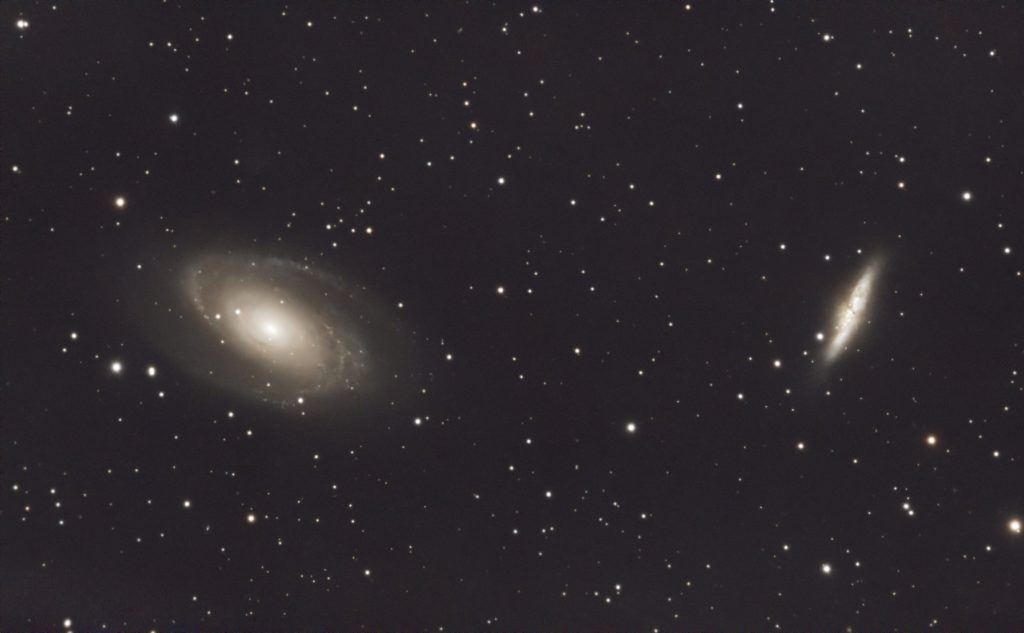The video above takes us on a trip around the heart – OK, the head, mostly – of the constellation Taurus – and it’s quite a ride. Based on the measured position and distance of some 11 million stars from the Gaia and Hipparchos space telescopes, this simulation from the Space Telescope Sciences Institute shows how the stars of Taurus, including the Hyades and Pleiades star clusters, change their appearance as we move in a big circle around the constellation at warp-drive speeds. This isn’t just an artist’s conception – it’s a reasonably accurate depiction in three dimensions of what we would see if we could take such a trip, and it’s quite mesmerizing as we get a glimpse of the structure of these famous clusters.
The simulation begins by showing Taurus as we see it from Earth as a V-shaped cluster of stars at the head of the celestial bull with the orange star Aldebaran marking its eye. But we see early on that Aldebaran lies much closer to us – about 65 light years – than the loose agglomeration of the Hyades which lies about 150 light years away. But we clearly see the Hyades as a bound and relatively loose star cluster that’s still holding together after 620 million years. We also see the blue-white stars of the Pleiades, about 440 light years away, as a more tightly-packed open cluster. With an age of 100 million years, its stars haven’t been tugged and pulled apart like the Hyades by the gravity of passing stars and gas clouds. The Pleiades, remarkably, appears oblong rather than spherical. This may be an artifact of measurement or perhaps a real effect. At around 0:50 in the video, we see Betelgeuse swing by. Then we see the Hyades dim slightly as it passes behind the Taurus Molecular Cloud, a dark cloud of gas and stardust where new stars are forming. Thousands more stars appear in the video, and we even see the background Milky Way thanks to star positions calculated from the other databases.
I’ve watched this video many times and pick out new details each time. We’re accustomed to seeing the sky in two dimensions, but we live in a 3D galaxy so these marvellous simulations make it easier to visualize the layout of our galactic environs. The same team also created visualization videos of the stars and dust clouds of Orion and Sagittarius, and they are well worth your time to watch and enjoy.
Share This:



